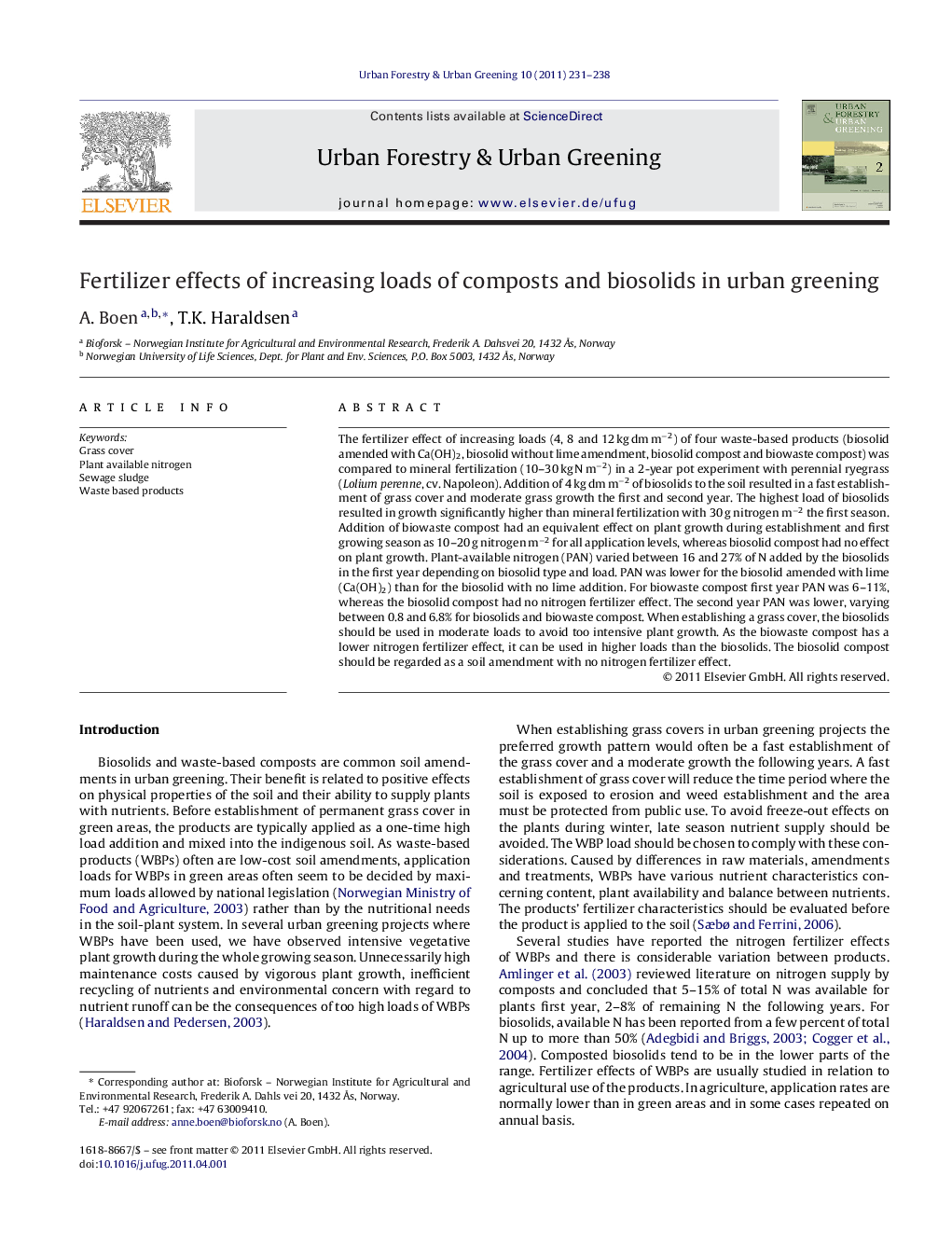| کد مقاله | کد نشریه | سال انتشار | مقاله انگلیسی | نسخه تمام متن |
|---|---|---|---|---|
| 94233 | 160264 | 2011 | 8 صفحه PDF | دانلود رایگان |

The fertilizer effect of increasing loads (4, 8 and 12 kg dm m−2) of four waste-based products (biosolid amended with Ca(OH)2, biosolid without lime amendment, biosolid compost and biowaste compost) was compared to mineral fertilization (10–30 kg N m−2) in a 2-year pot experiment with perennial ryegrass (Lolium perenne, cv. Napoleon). Addition of 4 kg dm m−2 of biosolids to the soil resulted in a fast establishment of grass cover and moderate grass growth the first and second year. The highest load of biosolids resulted in growth significantly higher than mineral fertilization with 30 g nitrogen m−2 the first season. Addition of biowaste compost had an equivalent effect on plant growth during establishment and first growing season as 10–20 g nitrogen m−2 for all application levels, whereas biosolid compost had no effect on plant growth. Plant-available nitrogen (PAN) varied between 16 and 27% of N added by the biosolids in the first year depending on biosolid type and load. PAN was lower for the biosolid amended with lime (Ca(OH)2) than for the biosolid with no lime addition. For biowaste compost first year PAN was 6–11%, whereas the biosolid compost had no nitrogen fertilizer effect. The second year PAN was lower, varying between 0.8 and 6.8% for biosolids and biowaste compost. When establishing a grass cover, the biosolids should be used in moderate loads to avoid too intensive plant growth. As the biowaste compost has a lower nitrogen fertilizer effect, it can be used in higher loads than the biosolids. The biosolid compost should be regarded as a soil amendment with no nitrogen fertilizer effect.
Journal: Urban Forestry & Urban Greening - Volume 10, Issue 3, 2011, Pages 231–238